'A dream of Nirvana... almost too good to be true': The sweet peas of Easton Walled Gardens, and how you can replicate their success at home
Ursula Cholmeley, who has spent 25 years restoring Easton Walled Gardens, recommends sowing sweet peas now for stronger plants that will better withstand the weather.

It’s fair to say that 2025 has not been a vintage year for outdoor-grown sweet peas. The hot dry days of an uncharacteristic May (followed, in our case, by frost during Chelsea Flower Show week) were not good for the young sweet peas looking for cool, moist days to climb up their supports before flowering. In their own gardens, our visitors have been dismayed to find short stems and weak plants. The question is, are sweet peas going to lose their crown as the queen of flowers with warming temperatures in the UK?
Fortunately, there is a back-up plan to help you grow the best sweet peas next year and that is to consider sowing them this autumn. The plants will be much stronger by the time they are planted out and able to take on a much wider range of temperatures. This is a technique that we have used at Easton Walled Gardens in Lincolnshire for many years. In 2001, when I started restoring this 12-acre garden, there was only chaos. Diggers, excavators, bonfires and crumbling walls felt overwhelming at times, so I created a small cutting garden (now part of The Pickery) and grew a few sweet peas with other annuals on the site of some demolished greenhouses.

A selection of pink Lathyrus odoratus at English Sweet Peas nursery, where all seed is harvested by hand from plants grown in East Anglia.
At the same time, I was researching the history of this 465-year-old garden and discovered that sweet peas had been grown here after the Second World War for the flower markets of Nottingham. They had been thriving in the Edwardian garden when the future President Franklin D. Roosevelt had visited and described what he saw as: ‘A dream of Nirvana… almost too good to be true.’
It was a promising start, so, after improving the soil (crucial to the success of good sweet peas) we grew our first round of autumn-sown sweet peas and found that they flowered a little earlier and with bigger flowers than their spring-sown siblings. For young plants sown in mid October, our first flowers appeared at the beginning of June. Nevertheless, it was a full month before they looked bushy enough to advertise our annual Sweet Pea Season. They were grown under unheated glass or in a cold frame before being planted out in the spring as the first weeds germinated in the garden. This has set the scene for the next 20 years of sweet-pea growing.
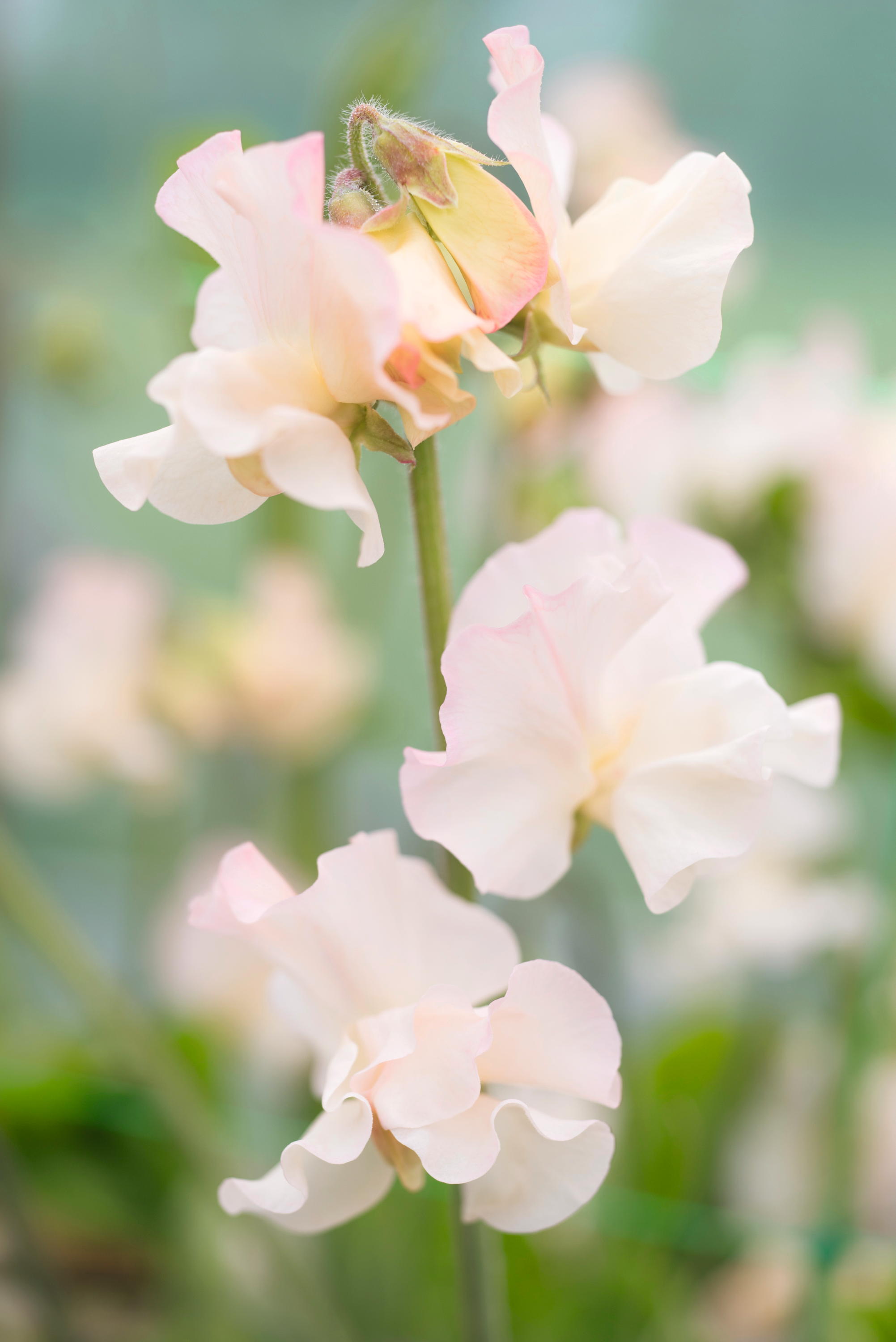
Strongly scented with long stems and large, pale flowers, L. odoratus ‘Piggy Sue’ is excellent for cutting and a bestseller.
Our aim is to show amateur gardeners how to get the best crop from their plants. Cut-flower growers and exhibitors will want to get their sweet peas into flower much earlier in the year, usually in polytunnels. Varieties of early or even winter-flowering ones are preferable and there has been a lot of interest in using these commercial varieties in the garden. For expert advice, I turned to Phil Johnson of English Sweet Peas in Maldon, Essex, who now holds the National Collection.
Mr Johnson, who bought the seed stock from Roger Parsons in April this year, together with the National Collection, is still in touch with the great man of sweet peas through his daughter Fran Armitage, who works alongside him. This year, the team exhibited at Chelsea for the first time and was awarded a Gold medal and some invaluable publicity for the flowers. The collection includes about 1,400 varieties and is growing every year as both Mr Parsons, in his retirement, and Mr Johnson are keen sweet-pea breeders.
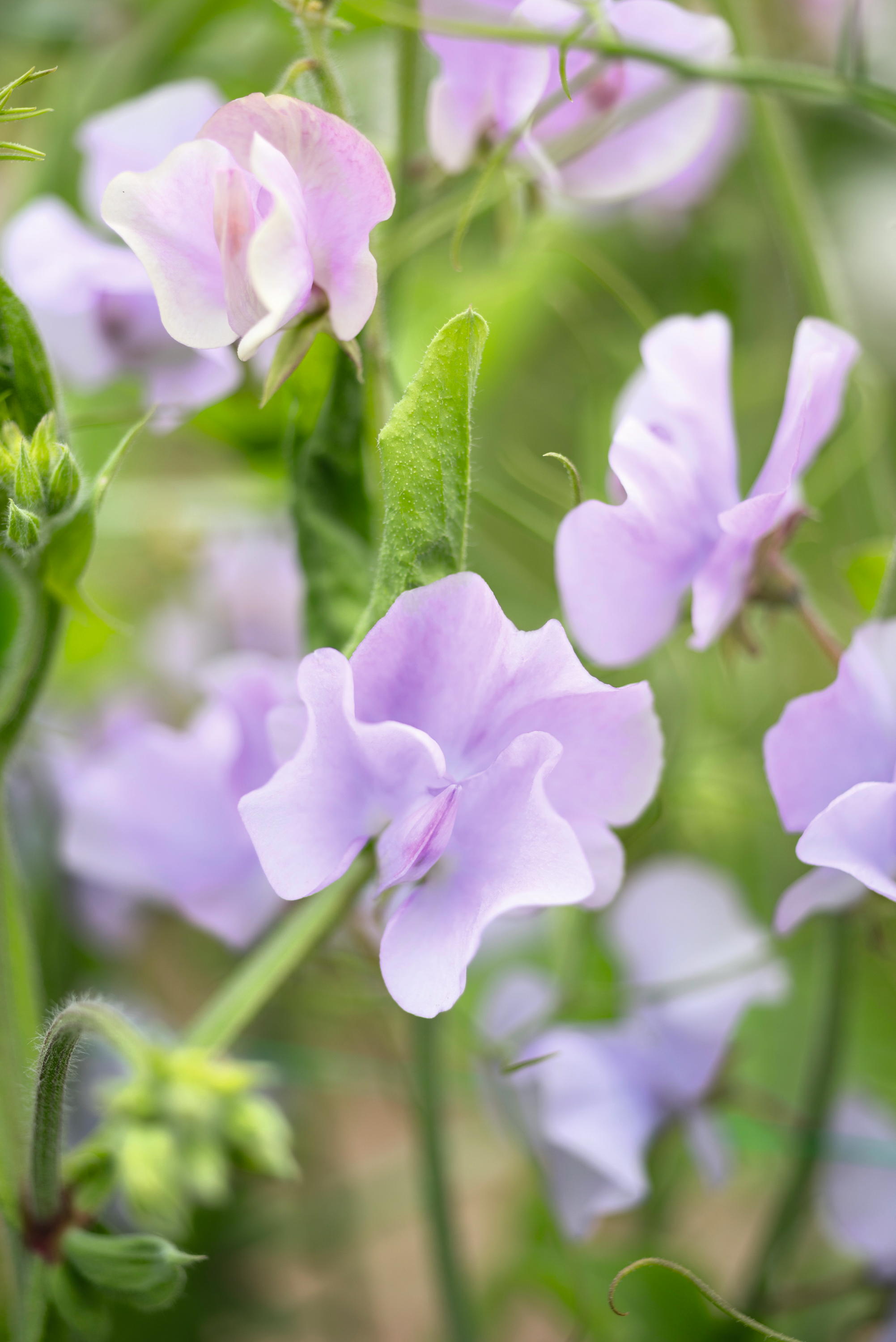
The early-flowering L. odoratus ‘Carmel’
Fortunately, we agreed on all the main essentials of autumn-sown sweet peas (don’t bring indoors after germination, remember they are hardy, not half-hardy and treat them mean to keep them keen). What this translates to is that it is all about growing roots over winter, not top growth. To achieve this, you will need to keep them cool, once the germination has taken place. Young sweet peas will tolerate freezing temperatures. We are in a cold valley, so we put horticultural fleece over our plants if the temperatures fall below -5˚C, but otherwise they tough it out in a sheltered spot.
Exquisite houses, the beauty of Nature, and how to get the most from your life, straight to your inbox.

A selection of new seedlings is grown in a series of trials at English Sweet Peas, which has taken over care of the National Collection from sweet-pea expert Roger Parsons.
For the earliest of sweet peas, grow the Winter Sunshine or Solstice range in an unheated glasshouse or polytunnel and you will see blooms on the plants by the first half of April. For amateur growers, Mr Johnson suggested sowing three or four 15-litre tubs undercover in October. Spencer varieties will flower by the end of May outside, but, as they need 12 hours of daylight to flower, you won’t gain much of an advantage by keeping them undercover. Outside, try the old-fashioned or grandiflora varieties, such as ‘Captain of the Blues’ or ‘Black Knight’: they flower a little earlier than their Spencer cousins. For outdoor pots, I like ‘America’, which is quite short and flowers early.
Easton Walled Gardens, Lincolnshire, offers a range of 40 sweet-pea varieties trialled and grown in the gardens. English Sweet Peas, Essex, offers 250 varieties, all grown on site.
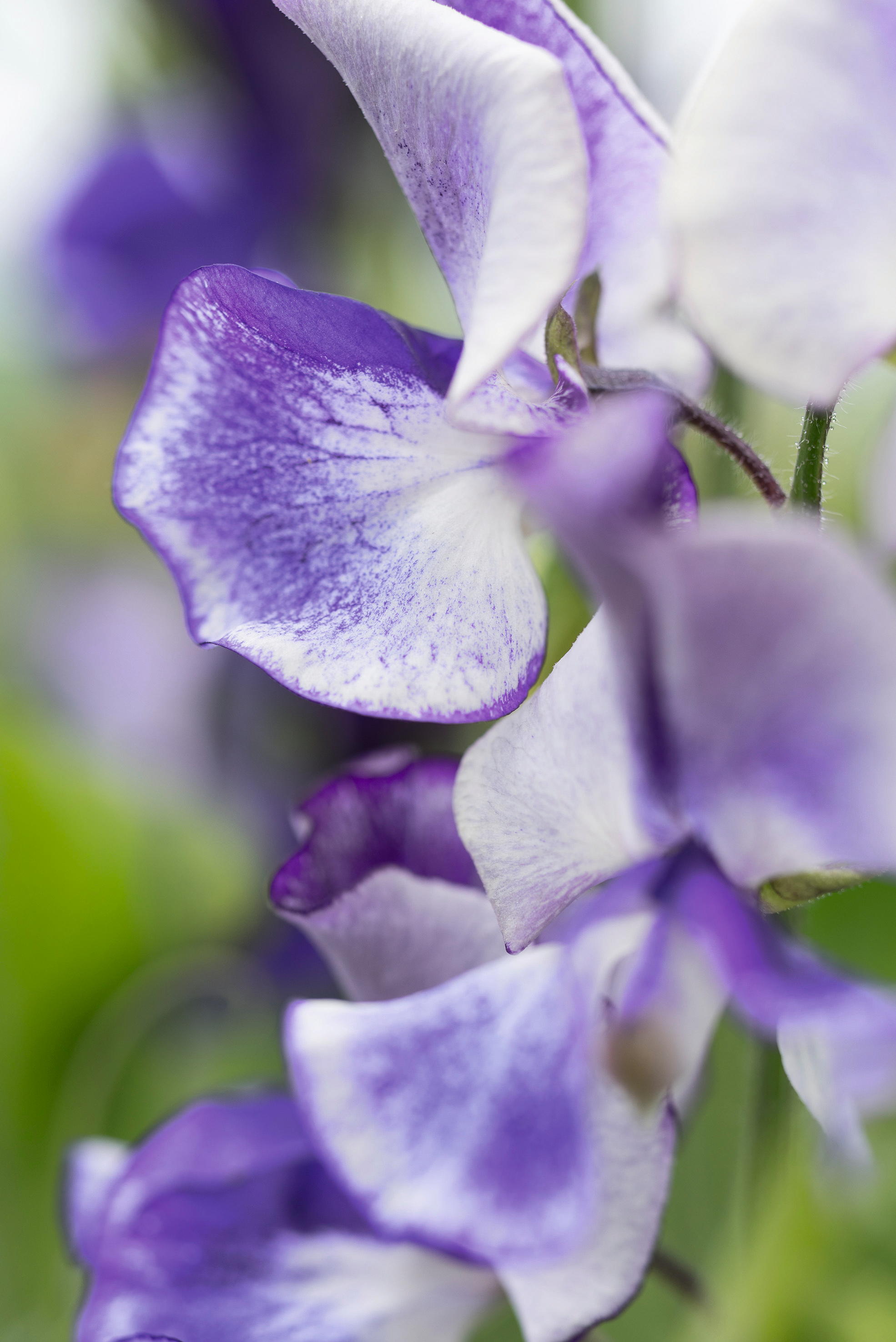
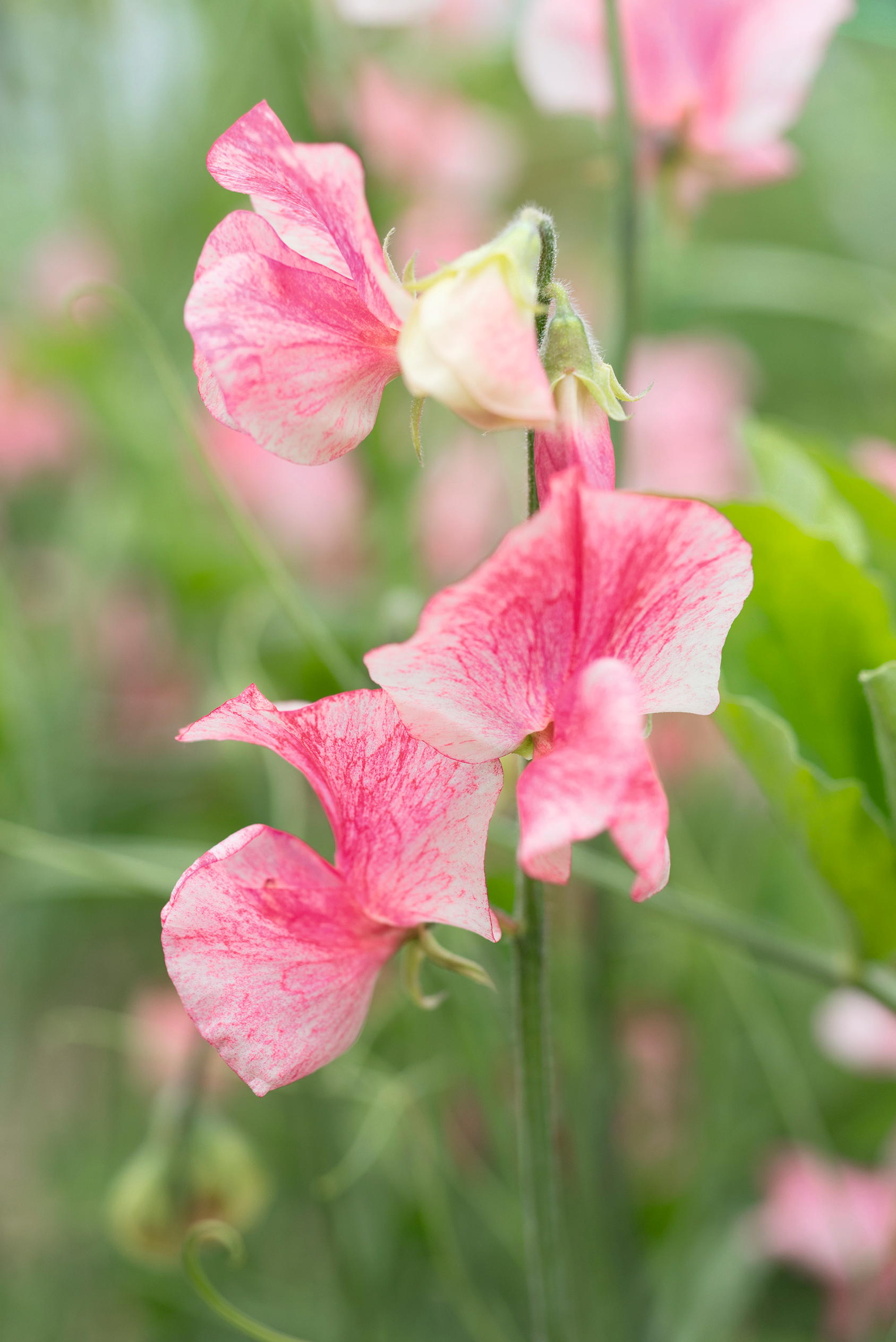
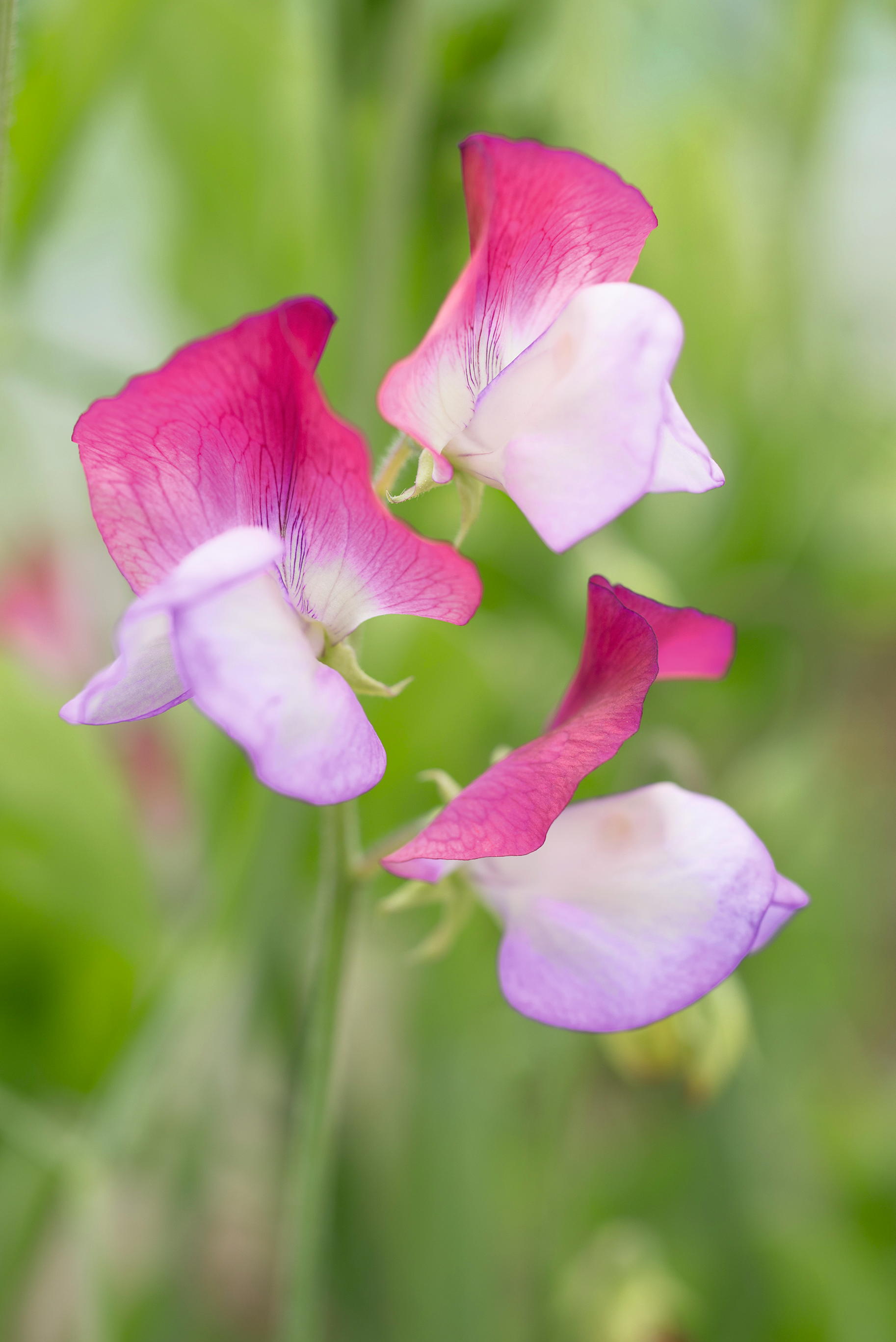
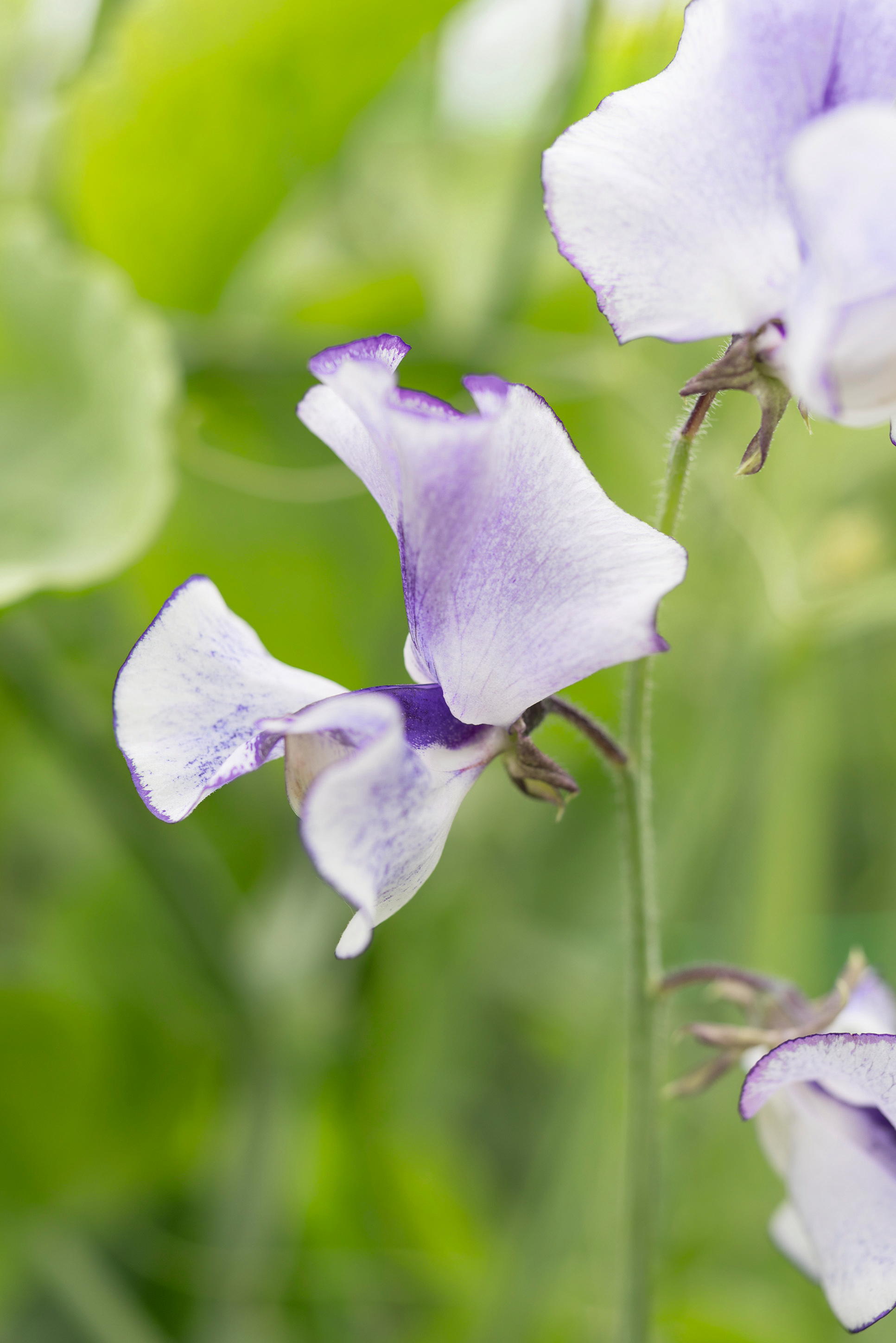
Lady Ursula Cholmeley and her husband Fred have revived and restored the Easton Walled Gardens in in Grantham, Lincolnshire.
-
 The pink granite chateau that the Cointreau family built in the Loire Valley is for sale at £3.5 million
The pink granite chateau that the Cointreau family built in the Loire Valley is for sale at £3.5 millionThe great country seats of the Guinness family have an equivalent over the Channel, where the chateau built by the Cointreau family is on the market.
-
 Quiz ahoy! Even these gorgeous mice have been waiting for the Country Life Quiz of the Day, November 21, 2025
Quiz ahoy! Even these gorgeous mice have been waiting for the Country Life Quiz of the Day, November 21, 2025From school reports in South America, it's all in today's Country Life quiz.
-
 Bare roots: How to find the perfect rose and how to plant it
Bare roots: How to find the perfect rose and how to plant itTabi Jackson Gee moved to a cottage in Wiltshire, and went about finding the perfect rose to bring light and colour to the garden.
-
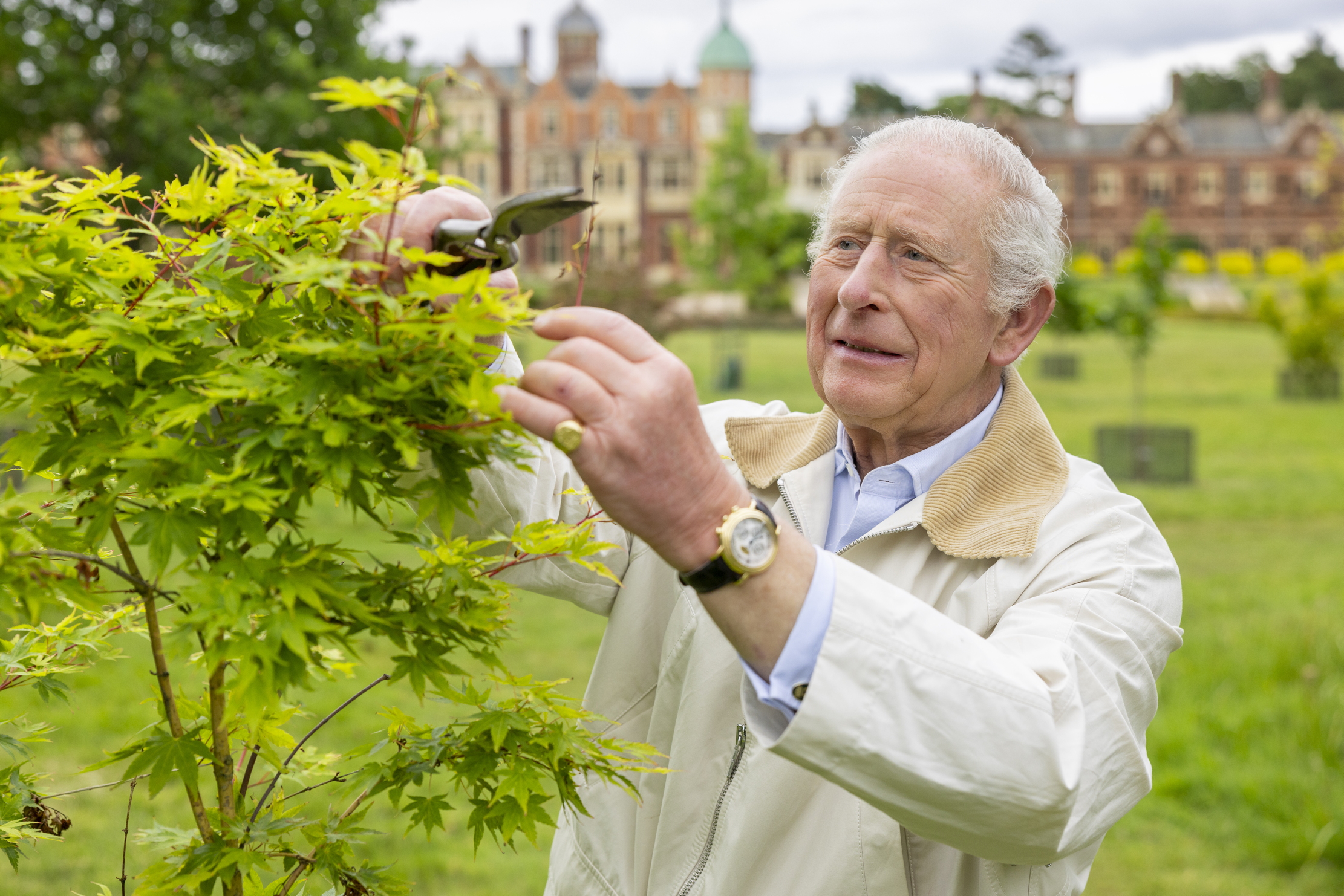 A royal success: The King's gardens at Sandringham
A royal success: The King's gardens at SandringhamIn only three years, The King has overseen a remarkable resurrection of the gardens and parkland at Sandringham. Charles Quest-Ritson visits
-
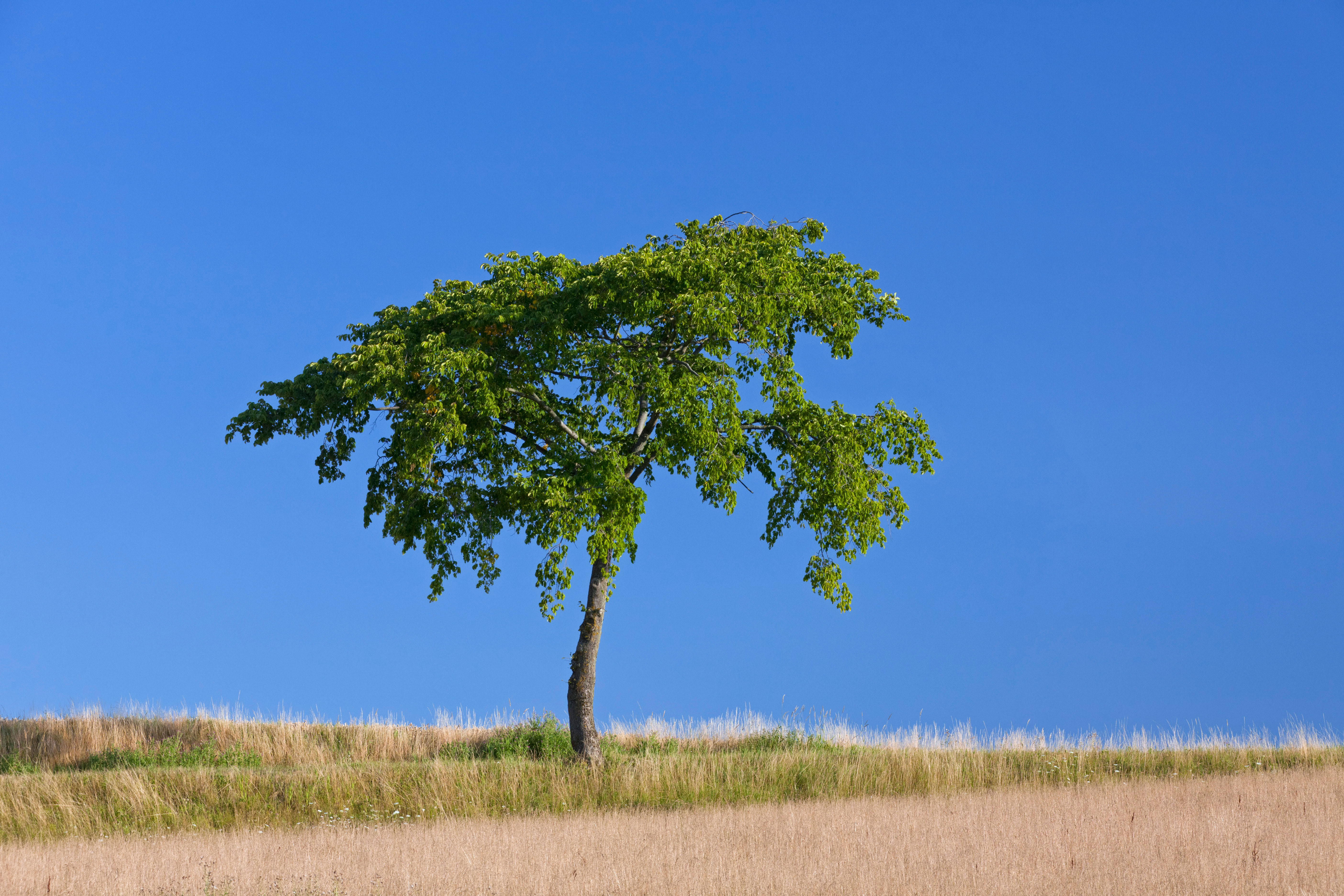 The trees that are as fine to eat as they are to look at
The trees that are as fine to eat as they are to look atMark Diacono doesn't grow many trees for the sake of the bounty they provide — but these are the notable exceptions.
-
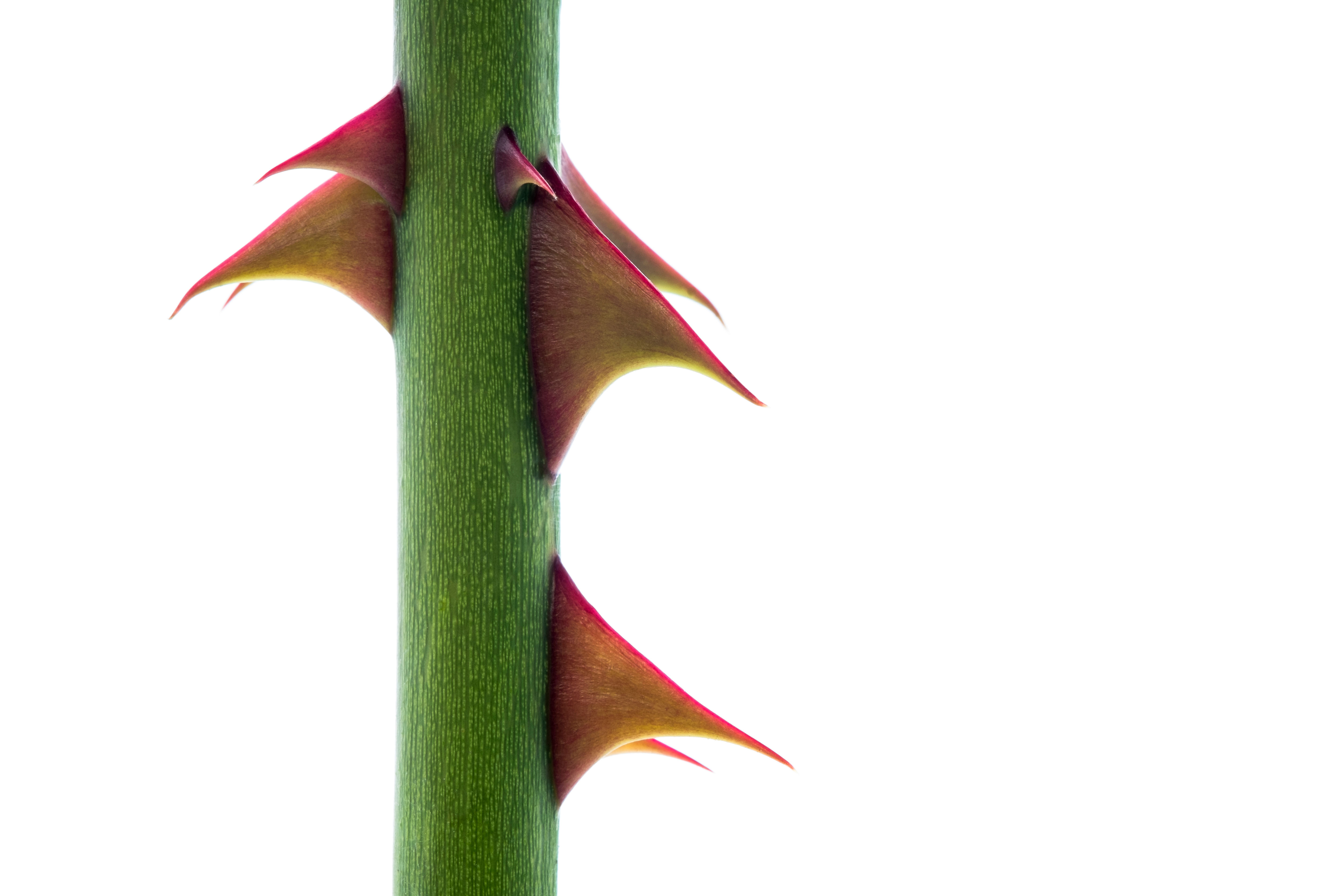 Bothered by brambles and snagged by sow thistles, but what is the point of all this thorny microaggression?
Bothered by brambles and snagged by sow thistles, but what is the point of all this thorny microaggression?Nature’s spiky deterrents — thorns, spines and prickles — may be quick to catch us out, but they can also prove to be a useful ally.
-
 The Tuscan gardens where the English and Italian traditions come together, and Yorkshire rhubarb grows happily beside spectacular citrus
The Tuscan gardens where the English and Italian traditions come together, and Yorkshire rhubarb grows happily beside spectacular citrusNick Dakin-Elliot, who gardens in Tuscany, is still moved by the Italian hilltop gardens that command some of the most beautiful views in the world.
-
 'My family wore wool at a time when everyone else had cast it off in favour of manmade fabrics': The knitwear pioneer who is one of David Beckham's countryside champions
'My family wore wool at a time when everyone else had cast it off in favour of manmade fabrics': The knitwear pioneer who is one of David Beckham's countryside championsJulie Harding speaks to Rachel Carvell-Spedding the founder of British knitwear brand Navygrey, and one of David Beckham's countryside champions.
-
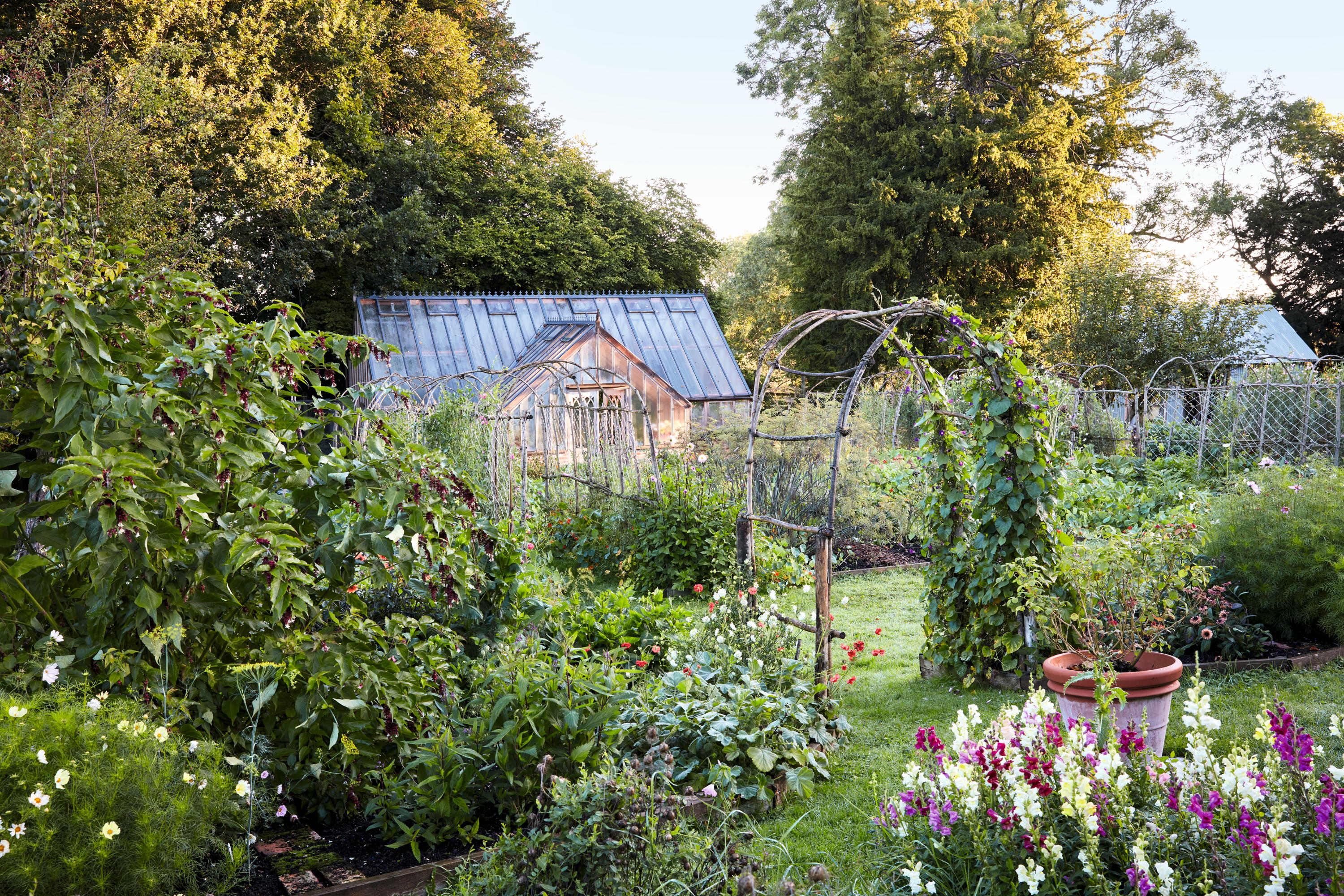 James Alexander-Sinclair: Making a new garden for someone is 'thrilling', but we need more sensitive and skilled gardeners to look after them
James Alexander-Sinclair: Making a new garden for someone is 'thrilling', but we need more sensitive and skilled gardeners to look after themPay your gardeners properly, says James Alexander-Sinclair as, without them, you will have no garden.
-
 'Seeing the work that people are doing all around the world has given me hope for the future': The young naturalist who is one of David Beckham's countryside champions
'Seeing the work that people are doing all around the world has given me hope for the future': The young naturalist who is one of David Beckham's countryside championsJulie Harding speaks to Ramandeep Nijjar, a young naturalist who has made an impact on the world even before finishing university, and one of David Beckham's countryside champions.